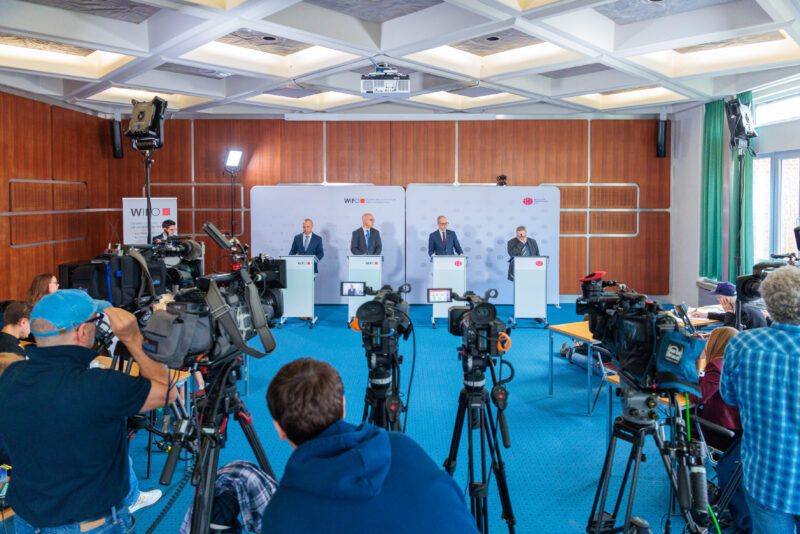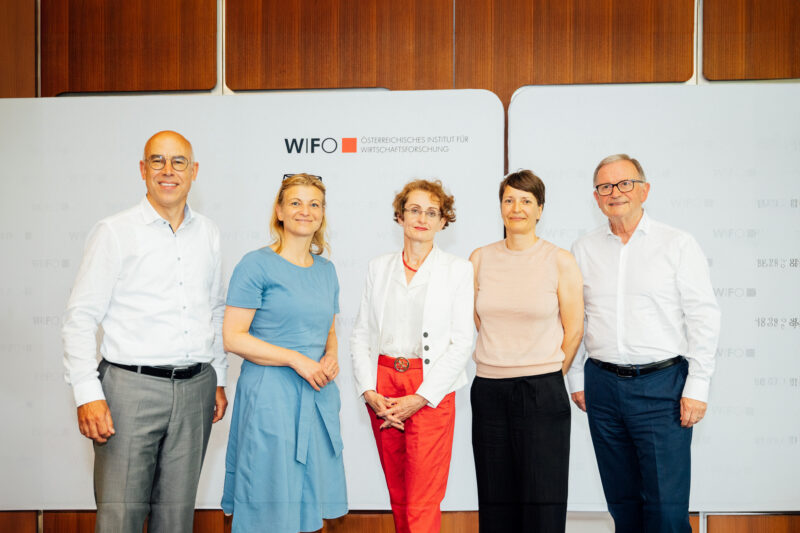
Average Annual Growth of 1.6 Percent until 2023
The expansion of family policy measures through the introduction of the "family bonus" (an income tax relief for families with children who are eligible for child benefits will increase private households' disposable income and thus support domestic private consumption. In 2019 and more so in 2020, they are counteracting the international pull and easing the economic slowdown in Austria. The tax cuts for private households and the more favourable starting position contribute to the better economic outlook in Austria compared to the euro area. As more than half of domestic exports go to the euro area, its GDP growth is the most important determinant of domestic exports. As a result, investment spending and total economic activity are also heavily dependent on the export performance.
Based on the projected expansion of the economy, average employment growth of 1.2 percent p.a. is expected over the forecast period (2014-2018 +1.5 percent p.a.). The unemployment rate is expected to remain stable at of 7.3 percent until 2021. From 2021, labour demand is expected to grow at a slower pace than labour supply due to a weakening economy. Hence, the unemployment rate will rise to 7.5 percent by the end of the forecast period.
In the medium term, the Inflationary pressure is expected to remain moderate, and the inflation differential with the euro area should continue to narrow, but not reverse. WIFO projects an average inflation rate of 1.8 percent p.a. according to the consumer price index.
Trend output growth (economic growth in line with a constant (wage) inflation – NAWRU) is forecast at an annual average 1¾ percent over the forecast period. The output gap is defined as the difference between the projected GDP and the expected trend output. It is predicted that the gap (0.9 percent in 2018) will closed by 2023. The Austrian economy will therefore continue to be in a phase of above-average but declining capacity utilisation over the next five years.
The forecasted economic conditions and the "no policy change" assumption for economic policy measures onwhich this outlook is based, result in a (slightly rising) surplus in the in the overall fiscal balance and a decline in the government debt as a percentage of nominal GDP to below 60 percent by the end of the forecast period.
Forecast uncertainties
From the international environment emerges downside risks for this medium-term forecast. An intensifying trade conflict between the USA and the EU would have a negative impact on both economies in the medium term.
The imminent withdrawal of the UK from the European Union will primarily have negative effects on its own economy. However, the economic development in the rest of Europe would also be adversely affected. The scale of the impact will depend on the currently unknown exit scenario, which will eventually be adopted.
Conflicts in major oil-producing regions or rising tensions between Russia and the EU pose a risk to energy supply and could lead to a significant increases in energy prices and inflation, respectively.
If some of these risks for the global economy were to materialise, the presumed international prospects for domestic exports would deteriorate and consequently weaken economic, employment and income growth in Austria.
The medium-term prospects for public households also bear an asymmetric risk of a (significantly) worse outcome: First, if the UK leaves the EU, Austria's net contribution to the EU budget is likely to increase.
Second, reforms envisioned by the federal government for income (reduction of income tax rates, dampening of tax bracket effects) and corporate taxation (reduction in corporate income taxes) were not taken into account in the present forecast .
If these reforms were (partially) implemented within the forecast period, revenue losses would reduce the projected fiscal surplus. At the same time, the tax cuts would potentially increase economic activity.
The net effect on general government net lending depends, on the additional revenue generated by the stimulus on economic activity and, on any (not yet specified) counter-financing measures.
The projected budget surplus and the decline in public debt are largely based on favourable government revenues. In case economic activity turns out significantly weaker than expected, the fiscal balance would also become less favourable than presented in the forecast.
























